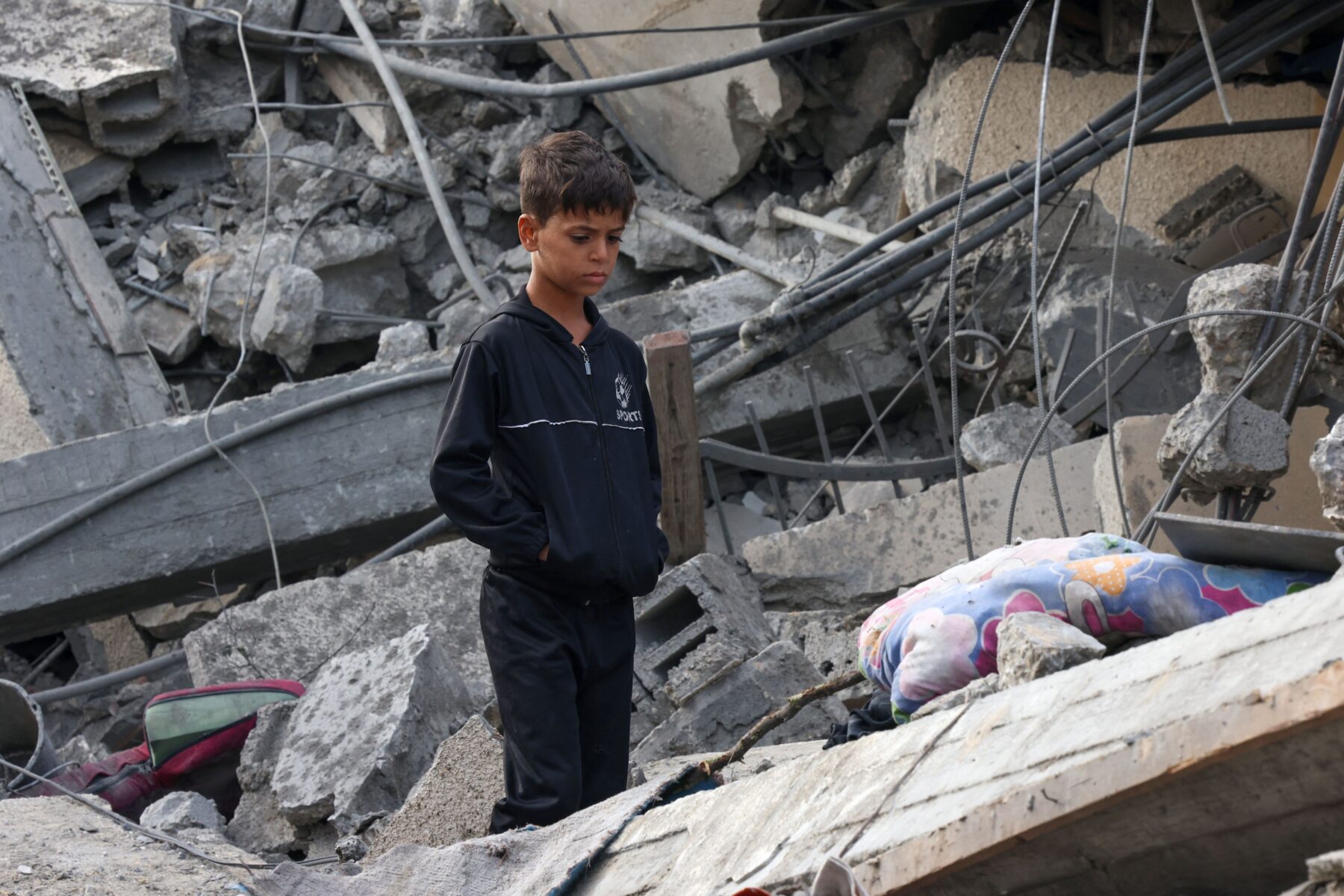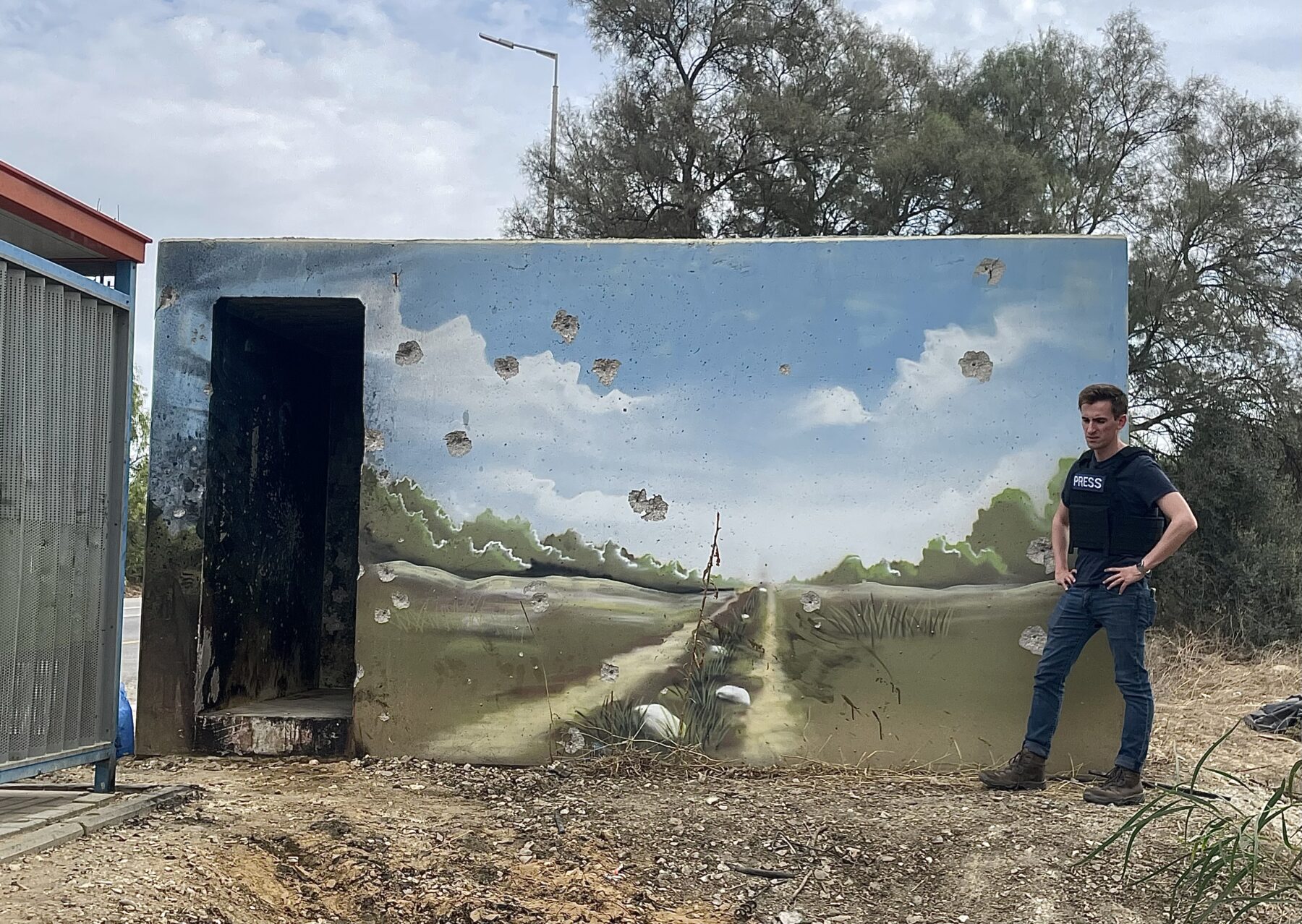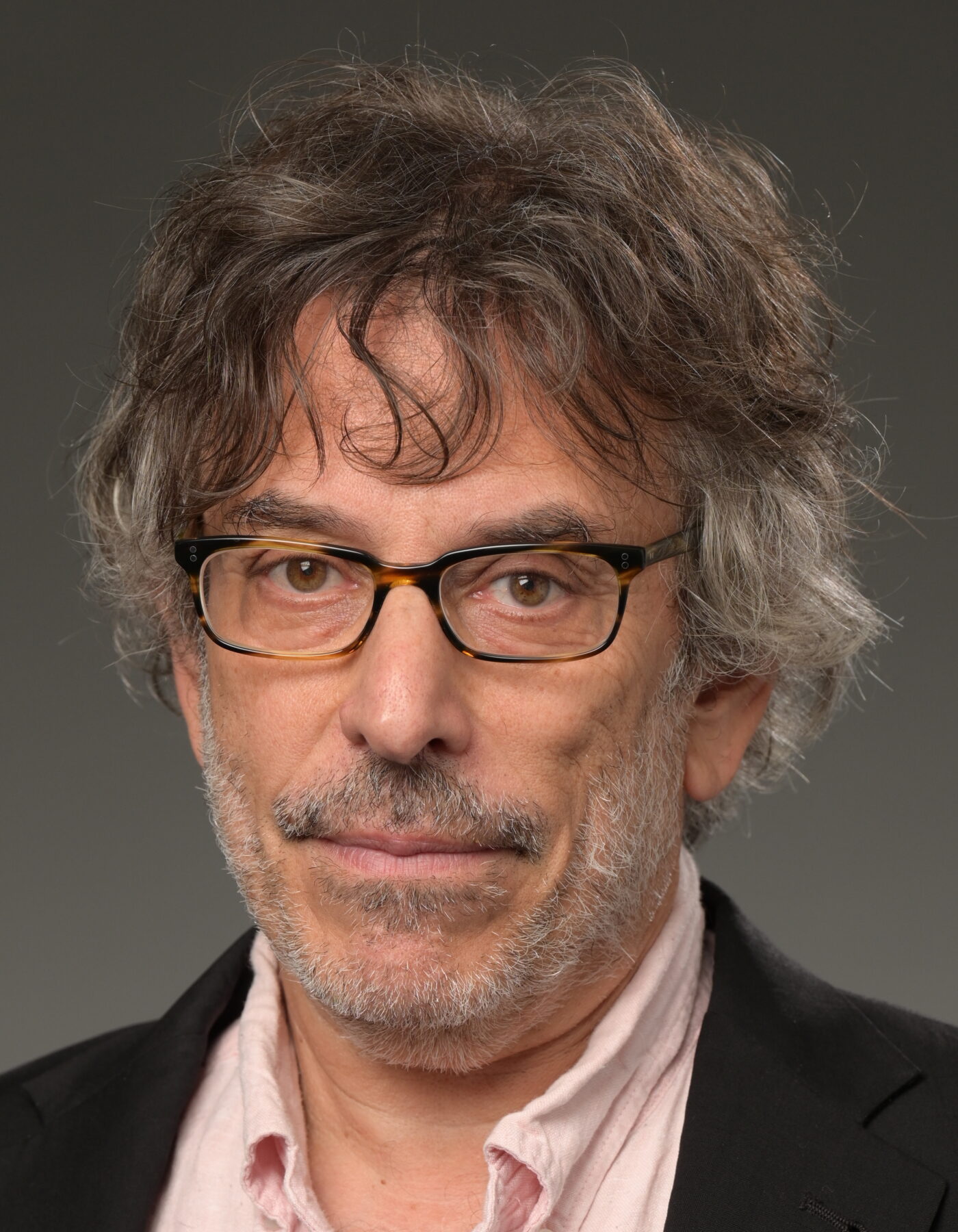
The images of the Israel-Hamas War are agonizing and unrelenting. Premature babies, frail and wrapped in blankets, forced out of their incubators after power was knocked out at a Gaza hospital. Bloodied Palestinian children, killed in an Israeli strike, lying on the floor of a morgue, covered in a white sheet. Israeli families charred beyond recognition in their own homes.
For NBC News Foreign Correspondent Raf Sanchez, some of the most upsetting war images have not been the most graphic. He vividly remembers watching footage of the Oct. 7 attack by Hamas, which Israel says left 1,200 dead. In the footage, presented to a group of journalists by the Israeli government, a father and his two young sons are seen running to a nearby bomb shelter for safety. A Hamas terrorist chases them, throwing a grenade inside and killing the father. The bleeding boys carry each other back inside the house.
“One of the boys says, ‘This isn’t a joke, this isn’t a prank. Dad’s dead.’ And the other one was screaming, ‘Why am I still alive?’” Sanchez recalled. “There’s a Hamas terrorist in the house looking at them, and he opens the fridge and drinks a bottle of Coke.”
Sanchez has also embedded with Israeli Defense Forces into Gaza, where health officials say Israeli airstrikes have killed more than 13,000 people in densely populated residential areas. “To be there and see pretty much nothing standing in the area is pretty shocking,” Sanchez said. “I found myself thinking about the unbelievable suffering of the Palestinian civilians and thinking about the destruction we were standing among. These are people’s homes, and when this ends, they will have no home to go back to.”
From assignment editors to social media managers to fact checkers, virtually every newsroom employee covering the Israel-Hamas War is bearing witness to haunting images of civilian deaths and large-scale destruction. Studies show that frequently viewing traumatic imagery can predict symptoms of anxiety and depression, including helplessness, intrusive thoughts and sleep disturbances. Repeated or extreme exposure to graphic imagery in the context of professional work can also be a pathway to PTSD, according to the Diagnostic and Statistical Manual of Mental Disorders. A 2021 review of research found between 6%-12% of journalists had probable post-traumatic stress disorder.
“That doesn’t mean it’s a doom or a fate or that psychological injury is inevitable,” said Bruce Shapiro, executive director of the Dart Center for Journalism and Trauma. “We need to take it seriously as an occupational health hazard.”
Here are four ways journalists covering the Israel-Hamas War can protect their mental health:
Have a plan with your team
Teams should have a strong understanding of their purpose and mission behind viewing — and publishing — traumatic imagery, Shapiro said. “The more we can burrow into professional standards and values, the more credible and authoritative we are — and the more we are taking care of ourselves,” he said.
Graphic imagery should prompt ethical conversations in newsrooms, Shapiro added. Pay close attention to which images will advance public understanding of the story or will shock viewers morally — but not sensationally.
When Sanchez viewed the Israeli government’s footage of the horrific Hamas attack, “it had a purpose,” he said. “It doesn’t make it less upsetting, but I was clear in my mind — and as a network we were clear — why it was important to see the footage and why it was worth reporting on.”

If war images become too taxing, Shapiro recommends pacing the workload, taking a bit of time off every hour and only looking at the material necessary for you to do your job. Visualization strategies can also be helpful. “Keep comforting images on your phone, computer or in your own head that you can call up if a particular piece of video or image is intruding,” Shapiro suggested. “The goal here isn’t to push reality away, but to give your brain a chance to metabolize these difficult events and keep yourself able to do your job effectively.”
A 2014 Canadian study found that frequent exposure to graphic user-generated content — photos and videos posted to social media — is more distressing than the duration of exposure. Shapiro said this suggests work should be distributed proportionately among teammates instead of one colleague bearing the burden.
Experts also suggest thatin broadcast newsrooms, video loggers and social newsgatherers use a content tagging system, i.e., “WARNING: DISTURBING CONTENT,” and note video time-codes colleagues should avoid screening. For print and digital newsrooms, the reporter or photo editor working on the story should also note the use of graphic images before it makes its way through the editorial process. This allows other staffers to make conscious choices on viewing upsetting pictures.
Talk to your colleagues
Supportive relationships within the newsroom become especially important in stressful and divisive times, Shapiro said. Journalists who received more support from colleagues after reporting on a terror attack had lower stress levels a decade later, according to a 2023 Norwegian study.
“Anyone involved in covering the Israel-Hamas War is going to bring multiple identities to the table,” Shapiro said “One of those identities is that of a journalist, and I would call on all of us to recognize that.”

The first month of the war was the deadliest for journalists since the Committee to Protect Journalists began keeping records in 1992. At least 48 journalists and media workers have been killed since Oct. 7, according to CPJ, the majority of whom were Palestinian and in Gaza.
“We have a team of unbelievably courageous Palestinian journalists in Gaza,” Sanchez said. “They are risking their lives to gather material not only under dangerous conditions but at the same time trying to keep their families safe and find food and water.”
Sanchez said that part of his role as an on-air correspondent is to do justice to their work. “Any time that I feel kind of tired or overwhelmed, I think about our colleagues in Gaza, and it redoubles my commitment to the story,” Sanchez said. He also emphasized the importance of checking in with colleagues during the few quiet moments they share. “There’s a real power in speaking to people who understand what you’re going through.”
Practice self-care
Sleep, exercise, social connections, breaks and buffer zones are paramount to practicing self-care, Shapiro said, especially when viewing graphic imagery.
“I’m a big believer in life that you feel overwhelmed when you don’t feel in control,” Sanchez said. “So even in these chaotic situations, I carve out time to exercise.” While running in southern Israel, he found solace in a new and unexpected place. “I stumbled on this enclosure where they had deer and another enclosure where they had goats,” Sanchez said. “I found it slightly comforting to stop in the minute and be in the presence of animals who don’t have any idea what we humans do to each other.”
He is also a big believer in to-do lists, reigning in doom scrolling and shut-eye. “Just protect your sleep as much as you can,” Sanchez said, acknowledging he was operating on little sleep. “If you can get that good night’s sleep tonight, you will thank yourself tomorrow and you will do better work.”
Reach out for professional help
If you find distressing war images interfering with your life in a significant way, Shapiro recommends talking to a trauma-trained psychotherapist. “As news professionals engaged in this horrific series of events, it’s important to recognize that we may well have a welter of feelings about this — and that’s OK,” Shapiro said. “It’s part of being human.”
According to the Dart Center, watch out for signs that your work is being impaired and any sustained changes in behavior, including: explosive anger, unusual withdrawal, persistent and intrusive images or thoughts related to a project, a persistent feeling of numbness or an increase in self-medication.
The Dart Center’s Journalism Trauma Support Network offers several resources, including a directory of therapists trained to work with journalists, how to choose a therapist and queer and trans-affirming therapist search engines. Therapy funding is also available through the Black and AAPI Journalist Therapy Relief Funds.
Journalism is a humane pursuit, Shapiro said, noting every act of honest reporting is a way of responding to the war. “When we cover violent events with our best toolkit, and feel our news values are consistent with what the situation requires, that’s associated with resilience in news professionals.”
If you or someone you know is in crisis and needs immediate help, dial 988 for the National Suicide and Crisis Hotline or text HOME to 741741 for 24/7confidential support.



